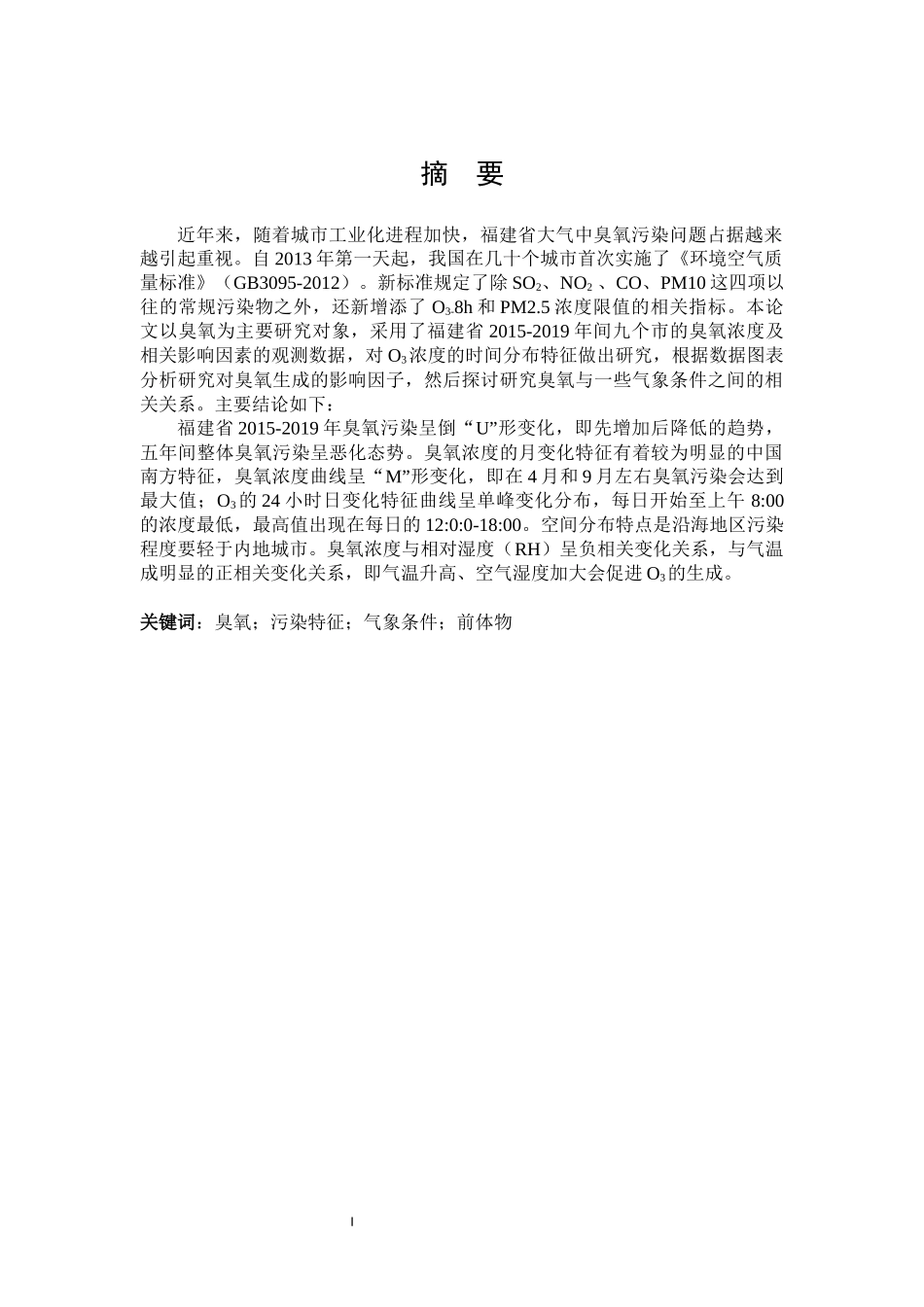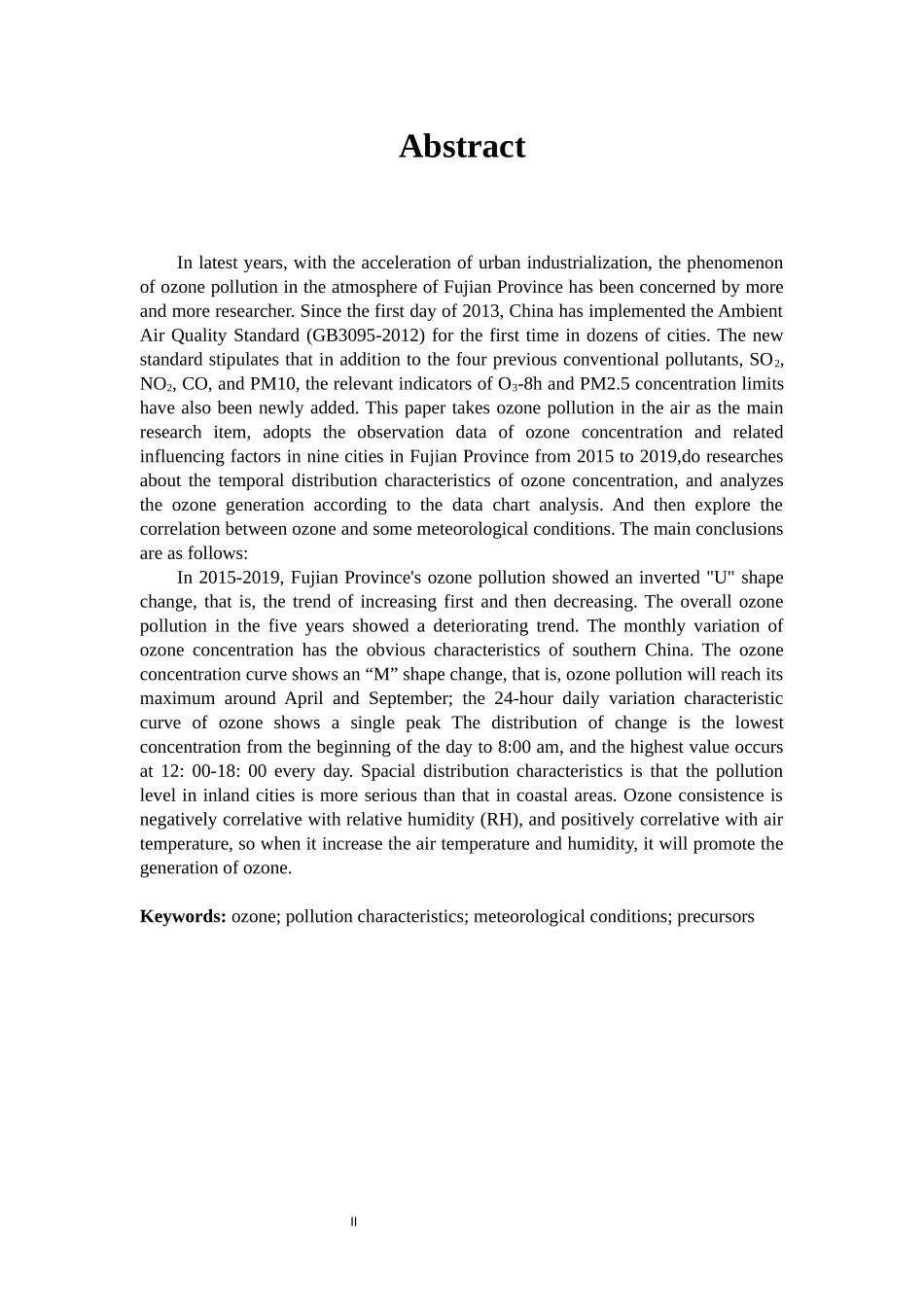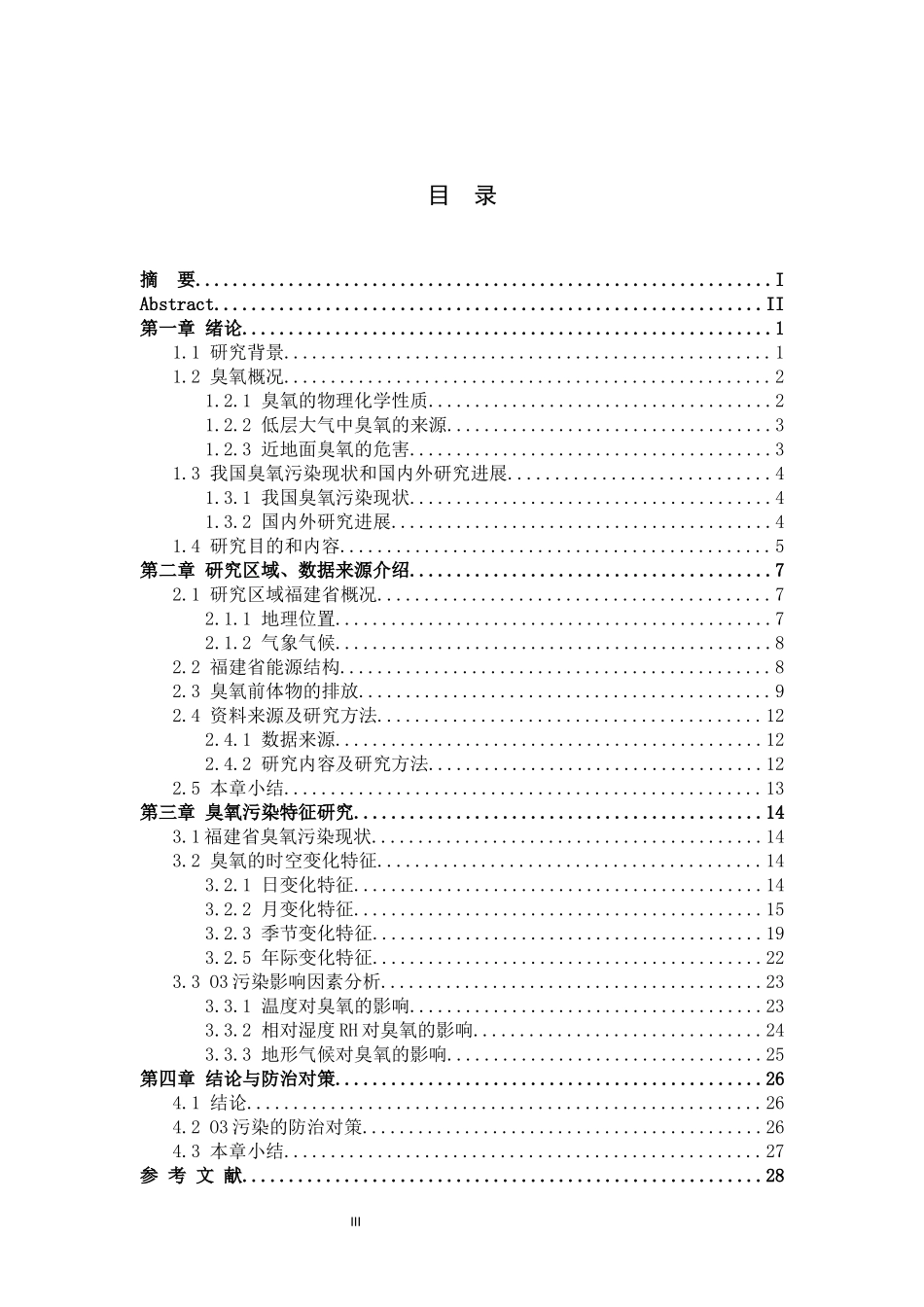I摘 要近年来,随着城市工业化进程加快,福建省大气中臭氧污染问题占据越来越引起重视。自 2013 年第一天起,我国在几十个城市首次实施了《环境空气质量标准》(GB3095-2012)。新标准规定了除 SO2、NO2 、CO、PM10 这四项以往的常规污染物之外,还新增添了 O3-8h 和 PM2.5 浓度限值的相关指标。本论文以臭氧为主要研究对象,采用了福建省 2015-2019 年间九个市的臭氧浓度及相关影响因素的观测数据,对 O3浓度的时间分布特征做出研究,根据数据图表分析研究对臭氧生成的影响因子,然后探讨研究臭氧与一些气象条件之间的相关关系。主要结论如下:福建省 2015-2019 年臭氧污染呈倒“U”形变化,即先增加后降低的趋势,五年间整体臭氧污染呈恶化态势。臭氧浓度的月变化特征有着较为明显的中国南方特征,臭氧浓度曲线呈“M”形变化,即在 4 月和 9 月左右臭氧污染会达到最大值;O3的 24 小时日变化特征曲线呈单峰变化分布,每日开始至上午 8:00的浓度最低,最高值出现在每日的 12:0:0-18:00。空间分布特点是沿海地区污染程度要轻于内地城市。臭氧浓度与相对湿度(RH)呈负相关变化关系,与气温成明显的正相关变化关系,即气温升高、空气湿度加大会促进 O3的生成。关键词:臭氧;污染特征;气象条件;前体物IIAbstractIn latest years, with the acceleration of urban industrialization, the phenomenon of ozone pollution in the atmosphere of Fujian Province has been concerned by more and more researcher. Since the first day of 2013, China has implemented the Ambient Air Quality Standard (GB3095-2012) for the first time in dozens of cities. The new standard stipulates that in addition to the four previous conventional pollutants, SO2, NO2, CO, and PM10, the relevant indicators of O3-8h and PM2.5 concentration limits have also been newly added. This paper takes ozone pollution in the air as the main research item, adopts the observation data of ozone concentration and related influencing factors in nine cities in Fujian Province from 2015 to 2019,do researches about the temporal distribution characteristics of ozone concen...


